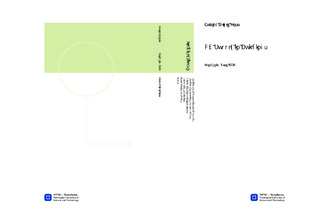| dc.description.abstract | In this study, existing work, opportunities, standards and essential safety aspects on development of LVDC distribution systems have been considered. It can be summarised that the standard requirements for AC systems also applies to DC systems, and that one does not come apart DC-DC regulators in equipment due to the galvanic separation which is needed to fulfil the safety requirements. One of the main challenges of introducing an LVDC system is the non-existence of building codes and standards intended for an LVDC system in buildings.The critical step of developing a DC distribution system is selecting the voltage level. Earlier studies conclude that: A standard voltage level of 230 V DC is proven to be sufficient for normal office loads, as long as the cable length does not exceed 80 m For higher power loads up to 6.5 kW the voltage level has to be increased to 326 V DC for systems with a cable length of maximum 47 m and 2.5 mm2This study proposes an LVDC system supplied by converted power from the main grid (AC-DC), where the size of the LVDC system is decided by performed measurements at an example building. In order to compare the losses in an AC and DC system, it was chosen to perform simulations on component level. It can be concluded that: An LVDC system supplied by a central VSC converting power from the AC grid is an energy efficient system solution compared to the existing AC system solution, largely depending on the performance of the VSCSimulations and calculations resulted in a requirement of performance > 97.7 % of the VSC in order for it to be more energy efficient with an DC system instead of the existing AC system solution with AC-DC converters in each link with a performance of approximately 97 %. Experts believe that it is possible to gain this performance in the future based on performance for smaller converters developed by leading manufactures.Based on the different aspects considered regarding introduction of an LVDC distribution system, simulated models, and performed measurements, it can be concluded that: From earlier studies it can be concluded that on the economic side, an LVDC distribution system seems benefitual Original DC loads will benefit from having a separate DC system in terms of power loss at a voltage level of 230 V DC AC loads require high power delivered and it will be most energy efficient to keep the connection to the existing AC system An LVDC system with a size of approximate 20 kW is realistic in the future, supplying a floor in a building with DC loadsFrom the material presented in this report, it can be summarised that it is a realistic possibility for future distribution systems in buildings to have an energy efficient mixed supply system, AC and DC. | nb_NO |

